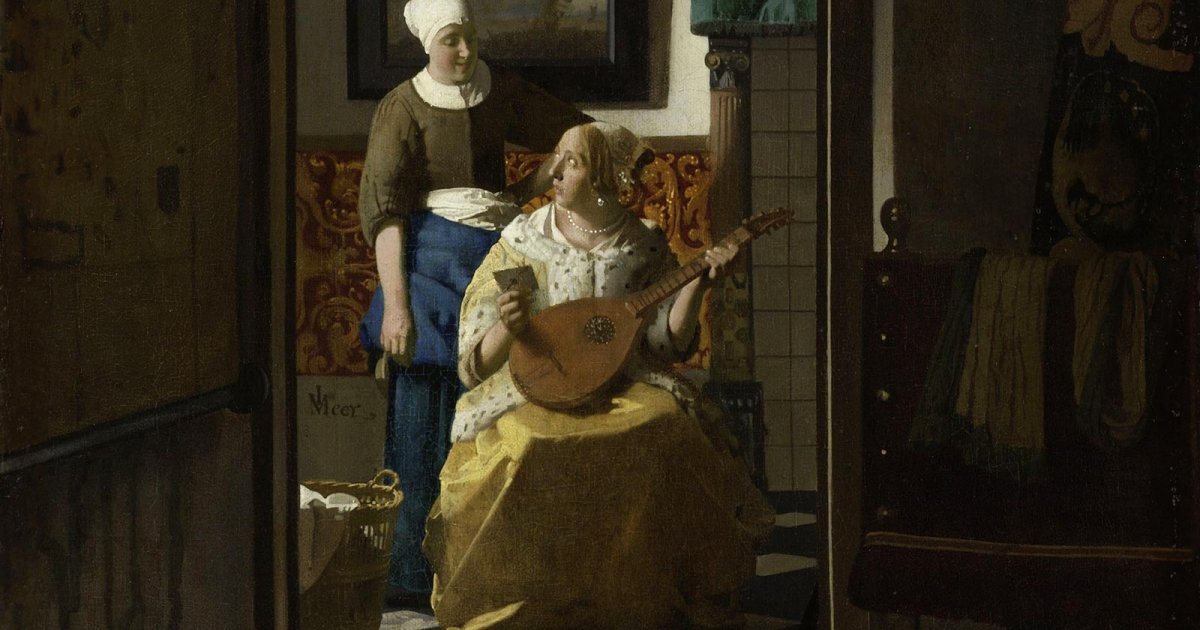RIJKSMUSEUM , The Love Letter Vermeer
 Language: English / USA
Language: English / USA
Like most of Vermeer’s works, The Love Letter is something of a mystery: there are no documents referring to it before it appeared on the antiques market at the end of the 19th century. Although there is no date on the canvas, academics believe it was painted around 1670; on the back wall, to the left of the maid, is the monogram IVM, the painter’s abbreviated signature.
The work is perfectly coherent with Vermeer’s creative and poetic development, featuring details and elements already present in other paintings, such as the brocade curtain and the fur-trimmed yellow gown of the lady, which appears in at least six other works.
Unlike many of his works, however, such as The Milkmaid or The Girl Reading a Letter, the subject is not painted directly facing a window. As you observe the luminous scene, you have the impression you are spying on the women from a dark hallway. This is the only occasion on which Vermeer used this perspective technique, which was quite common among his colleagues who painted indoor scenes.
The whole painting suggests the idea of cleaning and tidying that has been interrupted; this is accentuated by the broom and the slippers abandoned in the foreground.
The expressions, sentiments and feminine complicity evident here cut across social barriers. The lady appears concerned about the love letter she has just received, while the astute maid, who probably already knows what is written, responds with a reassuring smile.
Vermeer always places importance on the symbolic language of “paintings within the painting”. Pay attention to the pictures on the walls: the calm sea in the landscape behind the two women symbolizes a happy love story, while the boat under full sail is a reference to the Dutch proverb that says “while you may be far away, you’re close to the heart”.
An interesting fact: one aspect of Vermeer’s meticulous technique was the choice of often extremely expensive pigments, such as the ultramarine also used in The Milkmaid, or the lead tin yellow that appears in Girl Reading a Letter.
Although there appears to be an endless range of colors in Vermeer’s paintings, only twenty or so pigments have actually been identified in his works!
Our visit to the Rijksmuseum ends here. MyWoWo would like to thank you - see you again at another Wonder of the World!



